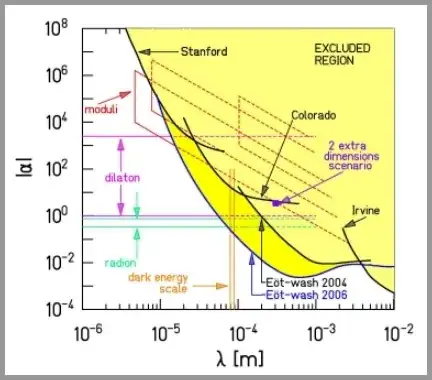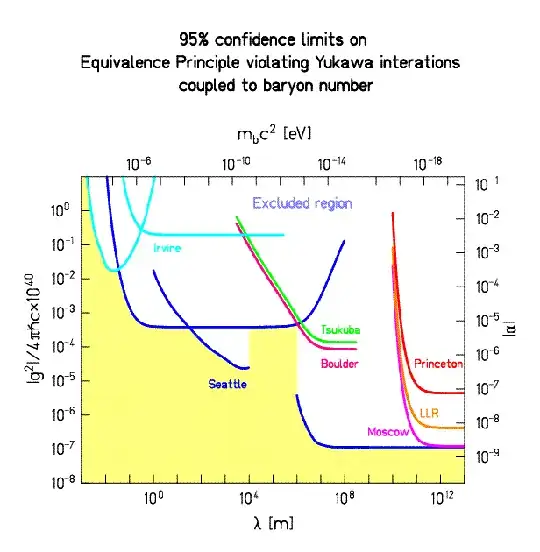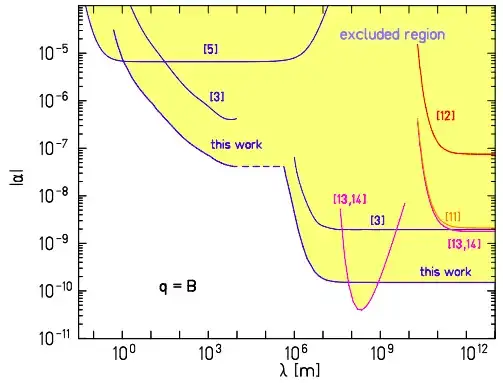This answer from 2012 shows some information on an exponential term characterized by relative strength and range parameters $\alpha$ and $\lambda$,
One potential tested here is here $$V(r)=-G\frac{m_1m_2}{r}(1+\alpha\exp(-r/\lambda))$$
The below plot shows the exclusion limits for both parameters $\alpha$ and $\lambda$
but the largest length shown is only about a centimeter.
Going to the University of Washington's page The Eöt-Wash Group; Results, I can see the following plot of limits that includes range scale of 1 meter and above:
but I can not understand the physics or the units.
Question: Are there any experimental limits on non-Newtonian gravitational force at length scales larger than 1 meter? Is there some way to know current limits on non 1/r potential between say 1 meter and 1 AU?
update: This has the unit-less expression I seek and the length scale of 1 meter and larger, but the experiment is based on a "material-composition dipole pendulum" torsional balance; one side of the dipole is four beryllium masses, and the other is four titanium masses.
That's a specific type of short-range deviation. I'm looking for a limit on all possible sources. Perhaps none exists yet?
From "Test of the Equivalence Principle Using a Rotating Torsion Balance," Schlamminger et al., PRL 2008, also on arXiv:
FIG. 3: New upper limits on Yukawa interactions coupled to baryon number with 95% confidence. The uncertainties in the source integration is not included in this plot. The numbers indicate references. The shaded region is experimentally excluded. Preliminary models for 10 km < λ < 1000 km indicate that the limit on α is smaller than the dashed line.


